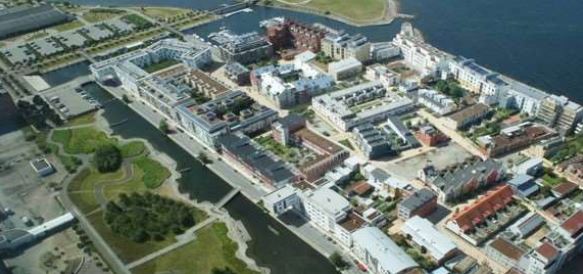The city of Dallas soon could issue a request for information (RFI) to identify potential anchor uses for Hensley Field, a site that holds potential for economic development and innovation but challenges in remediation of per- and polyfluoroalkyl substances (PFAS).
Consultants presented three scenarios for the Hensley Field master plan update to a Dallas City Council committee on September 21 anchored by a major corporate user, driven by residential development, or boosted by a “Living Laboratory of Resilience.”

Hensley Field rendering
The concepts were developed as part of the team’s preliminary recommendations for transforming the 738-acre former U.S. Navy base into a mixed-use, mixed-income, climate-smart, and walkable community.
Scenario One focuses on attracting a major corporation to relocate its headquarters to Hensley Field, complemented by 5,783 dwelling units and 3.8 thousand square feet (msf) of non-residential use.
The second scenario features a balance of residences with 5,783 dwelling units and 2.7 msf non-residential, but it lacks a catalytic anchor.
The third option boasts the higher number of dwelling units at 8,414 complemented by 5.3 msf non-residential but could take 30 to 40 years to fully absorb. Estimated revenues for the third scenario do not cover projected capital costs.
Consultants advised the city to begin marketing the site for one or more anchor uses to existing educational and medical institutions and private corporations through a request for information (RFI) or request for proposal (RFP).
They also recommended gauging interest from the motion picture industry in creating a film studio complex within Hensley Field as part of the solicitation process.
Other key recommendations included:
- Creating a balance of non-taxable and tax-generating uses.
- Reserving 60 to 80 acres along Jefferson Street for a future anchor use of 500,000 to 1 million square feet.
- Establishing an appropriate balance of for-sale and rental housing.
- Accelerating the relocation of the Texas Army National Guard.
- Retaining 25 percent of the site for public open space.
- Coordinating with Dallas Area Rapid Transit to plan a high-capacity transit linkage, such as bus rapid transit or light rail.
A draft master plan is anticipated for council action in March 2022 followed by selection of a master developer and coordination with the U.S. Navy regarding site clean-up.
